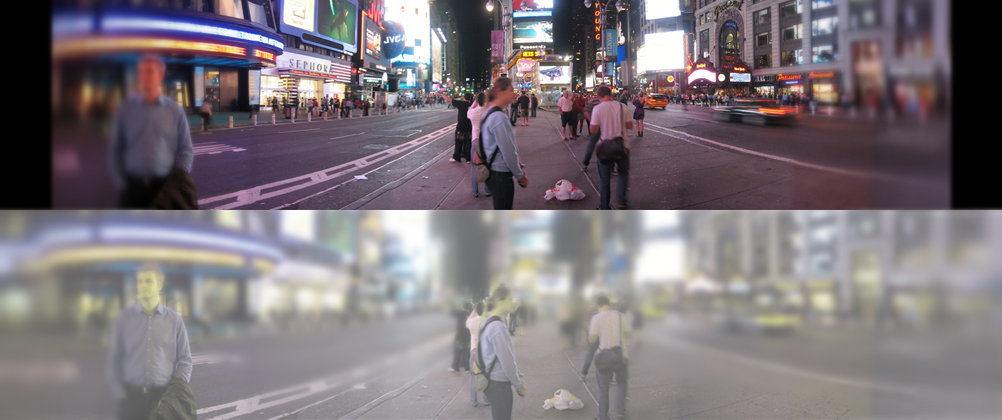Masters of darkness

Cats are crepuscular, meaning they are active at dawn and dusk, and their eyesight reflects that. They have six to eight times as many cells for viewing objects in low light as humans. That allows them to see much more in settings where humans would be almost completely in the dark. Here, human vision (top) is compared with cat vision (bottom).
Night Creatures

Their superior night vision also allows them to better capture motion in the dark. Cats also have better peripheral vision.
Limited Colors

But while cats may have the edge at night, humans have superior eyesight in the daytime. Humans have many more cones, the cells responsible for processing bright light. That provides us with a much more vibrant palette of color, with reds, yellows, oranges and browns looking very similar to them.
Blues and Yellows?

Scientists aren't sure exactly what color range cats see. Some believe cats see mostly blues or grays, whereas others say they see mostly blues and yellows with a touch of green. Either way, their color vision is no match for human vision.
Daytime limitations

Felines also have slightly less ability to focus up close, seeing things at 10 inches away that humans can see clearly at about 5.5 inches.
Near-sighted

Cats are also more near-sighted than humans: An object that we may see clearly at 100 feet would need to be 20 feet away for a cat to see it sharply.
Blurry Views

Objects that are far away can be much blurrier for a cat than a human. Panoramic city views probably don't look too impressive to a cat's eyes.
Get the world’s most fascinating discoveries delivered straight to your inbox.

Tia is the editor-in-chief (premium) and was formerly managing editor and senior writer for Live Science. Her work has appeared in Scientific American, Wired.com, Science News and other outlets. She holds a master's degree in bioengineering from the University of Washington, a graduate certificate in science writing from UC Santa Cruz and a bachelor's degree in mechanical engineering from the University of Texas at Austin. Tia was part of a team at the Milwaukee Journal Sentinel that published the Empty Cradles series on preterm births, which won multiple awards, including the 2012 Casey Medal for Meritorious Journalism.


